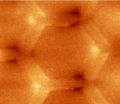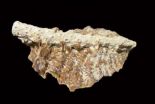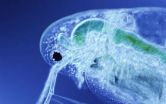(Press-News.org) Scientists have taken an important step forward in developing a new material using nano-sized magnets that could ultimately lead to new types of electronic devices, with greater capacity than is currently feasible, in a study published today in the journal Science.
Many modern data storage devices, like hard disk drives, rely on the ability to manipulate the properties of tiny individual magnetic sections, but their overall design is limited by the way these magnetic 'domains' interact when they are close together.
Now, researchers from Imperial College London have demonstrated that a honeycomb pattern of nano-sized magnets, in a material known as spin ice, introduces competition between neighbouring magnets, and reduces the problems caused by these interactions by two-thirds. They have shown that large arrays of these nano-magnets can be used to store computable information. The arrays can then be read by measuring their electrical resistance.
The scientists have so far been able to 'read' and 'write' patterns in the magnetic fields, and a key challenge now is to develop a way to utilise these patterns to perform calculations, and to do so at room temperature. At the moment, they are working with the magnets at temperatures below minus 223oC.
Research author Dr Will Branford and his team have been investigating how to manipulate the magnetic state of nano-structured spin ices using a magnetic field and how to read their state by measuring their electrical resistance. They found that at low temperatures (below minus 223oC) the magnetic bits act in a collective manner and arrange themselves into patterns. This changes their resistance to an electrical current so that if one is passed through the material, this produces a characteristic measurement that the scientists can identify.
The scientists have so far been able to 'read' and 'write' patterns at room temperature. However, at the moment the collective behaviour is only seen at temperatures below minus 223oC. A key challenge now is to develop a way to utilise these patterns to perform calculations, and to do so at room temperature.
Current technology uses one magnetic domain to store a single bit of information. The new finding suggests that a cluster of many domains could be used to solve a complex computational problem in a single calculation. Computation of this type is known as a neural network, and is more similar to how our brains work than to the way in which traditional computers process information.
Dr Branford, who is an EPSRC Career Acceleration Fellow in the Department of Physics at Imperial College London, said: "Electronics manufacturers are trying all the time to squeeze more data into the same devices, or the same data into a tinier space for handheld devices like smart phones and mobile computers. However, the innate interaction between magnets has so far limited what they can do. In some new types of memory, manufacturers try to avoid the limitations of magnetism by avoiding using magnets altogether, using things like ferroelectric (flash) memory, memristors or antiferromagnets instead. However, these solutions are slow, expensive or hard to read out. Our philosophy is to harness the magnetic interactions, making them work in our favour."
Although today's research represents a key step forward, the researchers say there are many hurdles to overcome before scientists will be able to create prototype devices based on this technique such as developing an algorithm to control the computation. The nature of this algorithm will determine whether the room temperature state can be used or if the low temperature collective behaviour is required. However, they are optimistic that if these challenges can be tackled successfully, new technology using magnetic honeycombs might be available in ten to fifteen years.
In experiments, Dr Branford applied an electrical current across a continuous honeycomb mesh, made from cobalt magnetic bars each 1 micrometer long and 100 nanometres wide, and covering an area 100 square micrometers (as pictured). A single unit of the honeycomb mesh is like three bar magnets meeting in the centre of a triangle. There is no way to arrange them without having either two north poles or two south poles touching and repelling each other, this is called a 'frustrated' magnetic system. In a single triangular unit there are six ways to arrange the magnets such that they have exactly the same level of frustration, and as you increase the number of triangular units in the honeycomb, the number of possible arrangements of magnets increases exponentially, increasing the complexity of possible patterns.
Previous studies have shown that external magnetic fields can cause the magnetic domain of each bar to change state. This in turn affects the interaction between that bar and its two neighbouring bars in the honeycomb, and it is this pattern of magnetic states that Dr Branford says could be computer data.
Dr Branford said: "The strong interaction between neighbouring magnets allows us to subtly affect how the patterns form across the honeycomb. This is something we can take advantage of to compute complex problems because many different outcomes are possible, and we can differentiate between them electronically. Our next big challenge is to make an array of nano-magnets that can be 'programmed' without using external magnetic fields."
INFORMATION:
Honeycombs of magnets could lead to new type of computer processing
2012-04-02
ELSE PRESS RELEASES FROM THIS DATE:
Declines in Caribbean coral reefs pre-date damage resulting from climate change
2012-04-02
The decline of Caribbean coral reefs has been linked to the recent effects of human-induced climate change. However, new research led by scientists at Scripps Institution of Oceanography at UC San Diego suggests an even earlier cause. The bad news – humans are still to blame. The good news – relatively simple policy changes can hinder further coral reef decline.
Employing a novel excavation technique to reconstruct the timeline of historical change in coral reefs located on the Caribbean side of Panama, a team of scientists led by Scripps alumna Katie Cramer and current ...
Published study finds usage of, reccomendations for dietary supplements high among dietitians
2012-04-02
WASHINGTON, D.C. -- Registered dietitians are one of several groups of healthcare professionals who report using dietary supplements as part of their health regimen, according to a newly published study in Nutrition Journal, a peer-reviewed, online journal that focuses on the field of human nutrition. According to data from the 2009 "Life…supplemented" Healthcare Professionals (HCP) Impact Study, 74 percent of dietitians use dietary supplements regularly while 22 percent reported using them occasionally or seasonally. The data also indicated that an overwhelming percentage ...
Amyloid beta in the brain of individuals with Alzheimer's disease
2012-04-02
The deposition of amyloid beta in the brain of individuals with Alzheimer's disease is the focus of much research into both its cause and treatment.
While there may not be a consensus as to whether the deposition contributes to the disease or is a consequence of the disease, there is agreement that it is not favoured thermodynamically, meaning that something else is promoting the process.
Other proteins are often co-deposited in vivo with amyloid beta and one such protein is serum amyloid P component (or SAP). Recent evidence has suggested that SAP is elevated in Alzheimer's ...
Tales from the crypt lead researchers to cancer discovery
2012-04-02
HUNTSVILLE, Ala – Tales from the crypt are supposed to be scary, but new research from Vanderbilt University, the HudsonAlpha Institute for Biotechnology and colleagues shows that crypts can be places of renewal too: intestinal crypts, that is. Intestinal crypts are small areas of the intestine where new cells are formed to continuously renew the digestive tract. By focusing on one protein expressed in our intestines called Lrig1, the researchers have identified a special population of intestinal stem cells that respond to damage and help to prevent cancer.
The research, ...
Newly discovered foot points to a new kid on the hominin block
2012-04-02
It seems that "Lucy" was not the only hominin on the block in northern Africa about 3 million years ago.
A team of researchers that included Johns Hopkins University geologist Naomi Levin has announced the discovery of a partial foot skeleton with characteristics (such as an opposable big toe bone) that don't match those of Lucy, the human ancestor (or hominin) known to inhabit that region and considered by many to be the ancestor of all modern humans.
The discovery is important because it provides first-ever evidence that at least two pre-human ancestors lived between ...
US stockpile security and international monitoring capabilities strengthened, says new report on technical issues behind the comprehensive nuclear test ban treaty
2012-04-02
WASHINGTON — The United States is now in a better position than at any time in the past to maintain a safe and effective nuclear weapons stockpile without testing and to monitor clandestine nuclear testing abroad, says a new report from the National Research Council. The report, requested by the Office of the Vice President and the White House Office of Science and Technology Policy, reviews and updates a 2002 study that examined the technical concerns raised about the Comprehensive Nuclear Test Ban Treaty (CTBT). The report does not take a position on whether the U.S. ...
Planet under Pressure conference, London: Final statement
2012-04-02
Scientists issued the first "State of the Planet" declaration at a major gathering of experts on global environmental and social issues in advance of the major UN Summit Rio+20 in June.
The declaration opens: "Research now demonstrates that the continued functioning of the Earth system as it has supported the well-being of human civilization in recent centuries is at risk." It states that consensus is growing that we have driven the planet into a new epoch, the Anthropocene, where many planetary-scale processes are dominated by human activities. It concludes society ...
Evolving to fight epidemics: Weakness can be an advantage
2012-04-02
When battling a deadly parasite epidemic, less resistance can sometimes be better than more, a new study suggests.
A freshwater zooplankton species known as Daphnia dentifera endures periodic epidemics of a virulent yeast parasite that can infect more than 60 percent of the Daphnia population.
During these epidemics, the Daphnia population evolves quickly, balancing infection resistance and reproduction.
A new study reveals that the number of vertebrate predators in the water and the amount of food available for Daphnia to eat influence the size of the epidemics and ...
Lung cancers detected by CT screening grow as fast as those found with traditional methods
2012-04-02
A new study led by researchers at Mount Sinai School of Medicine indicates that CT scans are more effective than traditional lung cancer detection methods at identifying aggressive lung cancers in their most treatable stages. The data, published online March 27 in the journal Radiology, demonstrate that lung cancers found through annual CT screening are similar to those found in routine practice, both in terms of tumor growth rates and cell-type distribution. In fact, the report showed that 79 percent of the cases diagnosed through annual repeat CT scans were detected at ...
Penn biologists identify a key enzyme involved in protecting nerves from degeneration
2012-04-02
PHILADELPHIA –- A new animal model of nerve injury has brought to light a critical role of an enzyme called Nmnat in nerve fiber maintenance and neuroprotection. Understanding biological pathways involved in maintaining healthy nerves and clearing away damaged ones may offer scientists targets for drugs to mitigate neurodegenerative diseases such as Huntington's and Parkinson's, as well as aid in situations of acute nerve damage, such as spinal cord injury.
University of Pennsylvanian biologists developed the model in the adult fruit fly, Drosophila melanogaster.
"We ...



